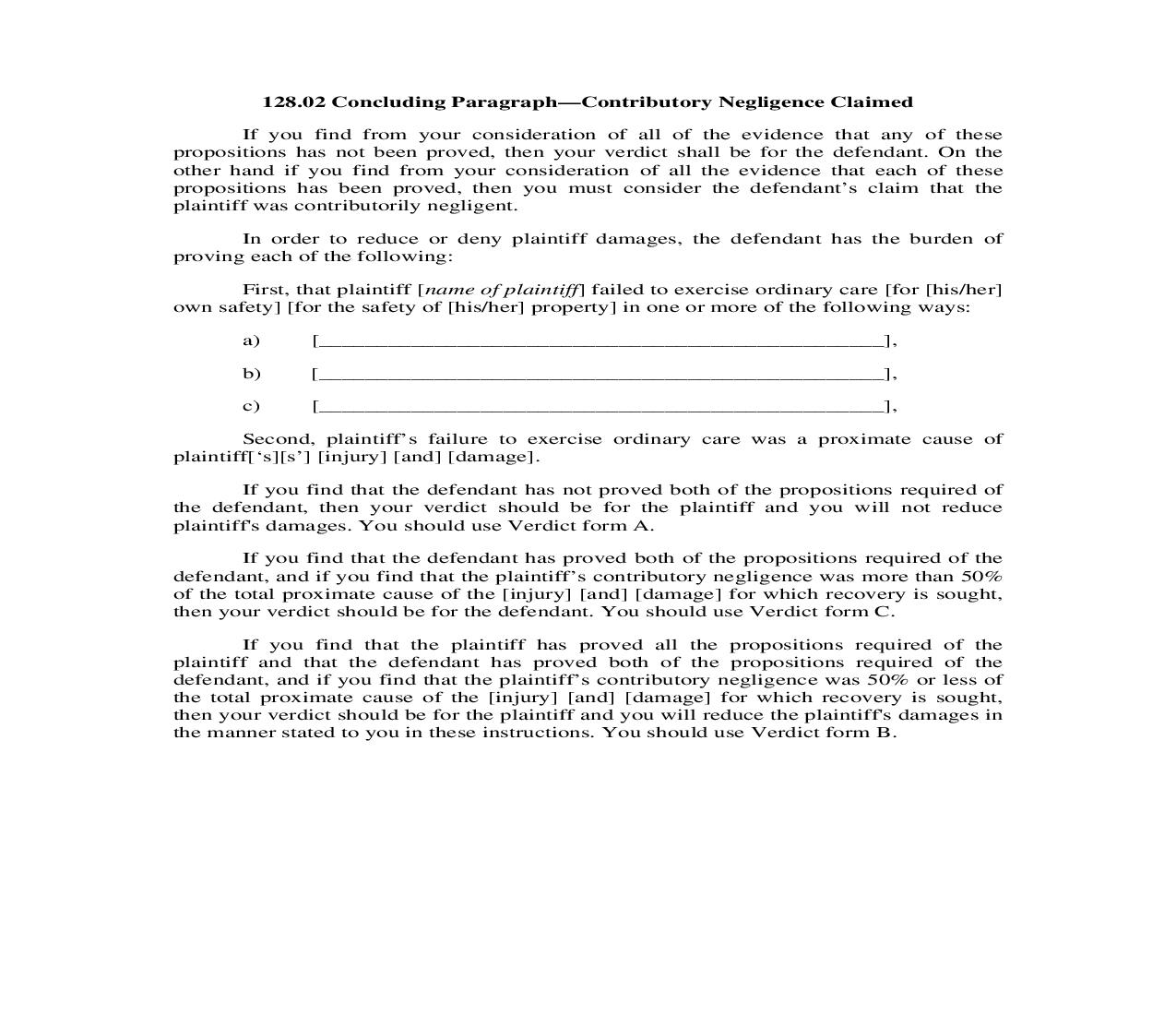
Last updated: 4/13/2015
128.02. Concluding Paragraph-Contributory Negligence Claimed
Start Your Free Trial $ 11.99What you get:
- Instant access to fillable Microsoft Word or PDF forms.
- Minimize the risk of using outdated forms and eliminate rejected fillings.
- Largest forms database in the USA with more than 80,000 federal, state and agency forms.
- Download, edit, auto-fill multiple forms at once in MS Word using our Forms Workflow Ribbon
- Trusted by 1,000s of Attorneys and Legal Professionals
Description
128.02 Concluding Paragraph--Contributory Negligence Claimed If you find from your consideration of all of the evidence that any of these propositions has not been proved, then your verdict shall be for the defendant. On the other hand if you find from your consideration of all the evidence that each of these propositions has been proved, then you must consider the defendant's claim that the plaintiff was contributorily negligent. In order to reduce or deny plaintiff damages, the defendant has the burden of proving each of the following: First, that plaintiff [name of plaintiff] failed to exercise ordinary care [for [his/her] own safety] [for the safety of [his/her] property] in one or more of the following ways: a) b) c) [_________________________________________________], [_________________________________________________], [_________________________________________________], Second, plaintiff's failure to exercise ordinary care was a proximate cause of plaintiff[`s][s'] [injury] [and] [damage]. If you find that the defendant has not proved both of the propositions required of the defendant, then your verdict should be for the plaintiff and you will not reduce plaintiff's damages. You should use Verdict form A. If you find that the defendant has proved both of the propositions required of the defendant, and if you find that the plaintiff's contributory negligence was more than 50% of the total proximate cause of the [injury] [and] [damage] for which recovery is sought, then your verdict should be for the defendant. You should use Verdict form C. If you find that the plaintiff has proved all the propositions required of the plaintiff and that the defendant has proved both of the propositions required of the defendant, and if you find that the plaintiff's contributory negligence was 50% or less of the total proximate cause of the [injury] [and] [damage] for which recovery is sought, then your verdict should be for the plaintiff and you will reduce the plaintiff's damages in the manner stated to you in these instructions. You should use Verdict form B. Instruction revised April 2007.







